Foam mattresses

Foam mattresses are a fairly relevant purchase. Despite the fact that companies are constantly developing new types of mats fillings, a large part of consumers prefer foam blocks. Not everyone can afford a latex or coconut block: it is expensive, and if its design provides for an additional effect, then even more so. Foam mattresses are comfortable, made according to modern technologies, with their low weight, they have strengths and weaknesses.
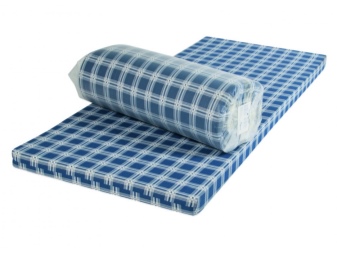
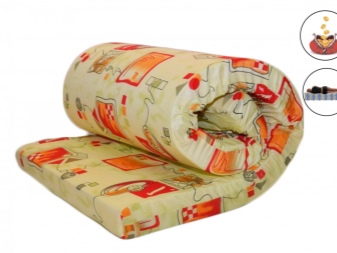

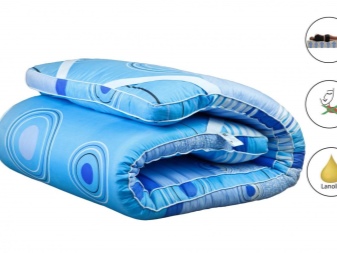
Advantages and disadvantages
Foam mattresses are distinguished by a budget price. Their purchase will not hit the budget, so they will be in demand among buyers for a long time.
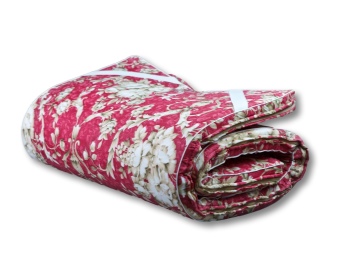

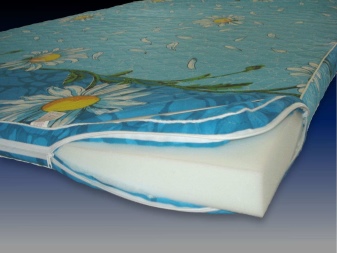
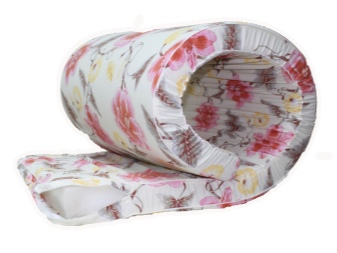
Foam mattresses:
- hypoallergenic: they do not irritate the skin and are suitable even for allergy sufferers;
- safe for health (there are no steel elements that can break, stick out and injure the user);
- have excellent air exchange, which eliminates the appearance of an environment for microorganisms (fungus, mold, linen mites);
- in expensive models, they are quite elastic, they are distinguished by excellent density (pushing effect), they quickly restore their shape;
- have several degrees of rigidity, allowing the user to choose the most convenient and comfortable option;
- having a composite block structure, they are complemented by a different effect;
- unlike spring mats and latex, they do not have internal cavities, therefore they are less susceptible to dust;
- when used correctly, they do not cake, do not fade, although sometimes they turn slightly yellow at the edges;
- are intended for people of different constitutions, taking into account their weight and medical indicators;
- they are distinguished by a rich size range, allowing you to choose a model as accurately as possible in accordance with the size of the bed;
- at the request of the client are made individually.
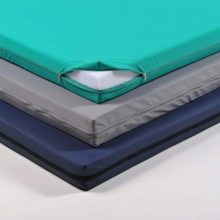

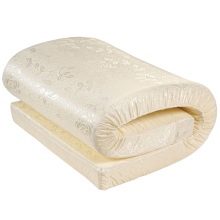
In addition to the advantages, foam mattresses have several disadvantages:
- the filler does not withstand direct sunlight (it is unacceptable to dry the mat without a cover under the sun);
- the service life of such mats is inferior to expensive counterparts, even if they are supplemented with high-quality padding;
- the structure of the foam block is susceptible to moisture: if the mattress is not periodically ventilated, this will shorten its service life;
- this mattress filling is good for adults and heavy users.



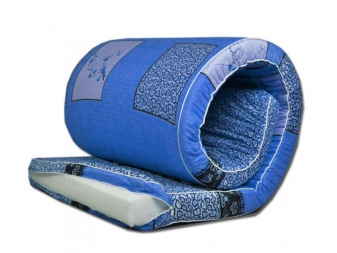
How is it different from polyurethane foam?
Initially, the name of the filler sounded Perlon U, then (when it began to be mass produced) the manufacturer gave it the name of the same name Porolon. In fact, foam rubber and polyurethane foam are practically two varieties of the same material, which is a microcellular derivative of plastic, which, when solidified, becomes like a sponge-like layer.



If the seller in the store says that these are two different materials, this is not entirely true. Foam rubber is common (standard type T) and furniture (HR class). The second is more often called polyurethane foam, it has the best quality characteristics and service life.
If the second polyurethane foam contains a minimum percentage of latex, then you can hear another name for the filler: synthetic latex.
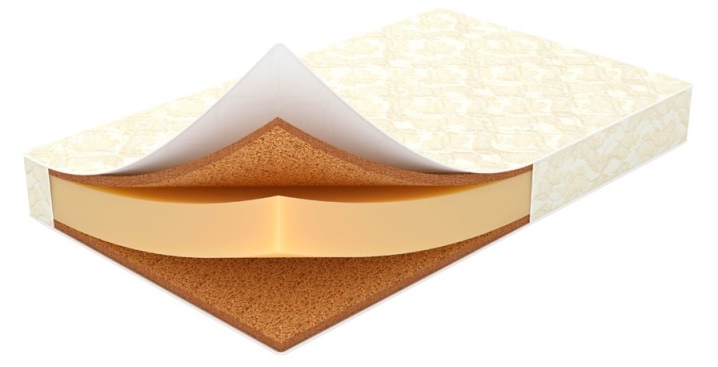
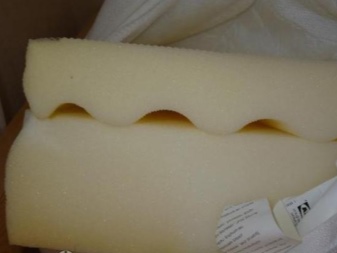
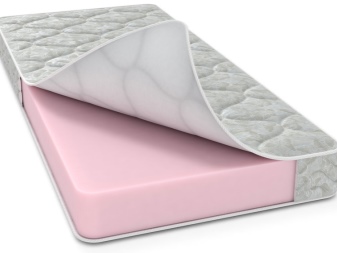
Views
Foam mattresses are made on a springless basis.Of course, foam rubber is also found in spring blocks, but then it is only an additive (not the main element) that covers steel elements.
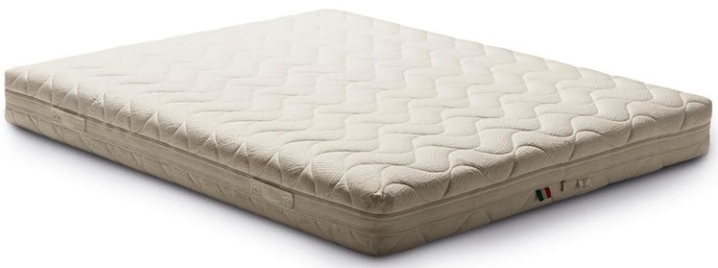
Foam mattresses are of three types:
- monolithic - mats in the form of a single layer of different thickness (from 5 to 15 cm) without additional layers of other packings;
- compositional - a combination of furniture foam rubber and latex, coconut fiber, felt, spandbond, struttoplast, holofiber, sheep or camel wool, cotton, flax;
- flaky - models, in contrast to the combined ones, which do not have a thick base layer (the structure consists of several layers of the same thickness, but different density).
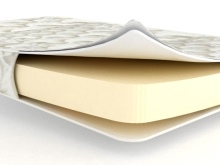
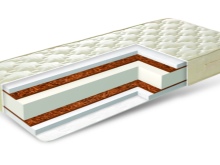
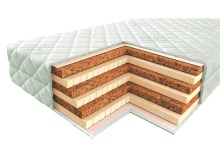
Foam mattresses are universal: they are bought for a bed, sofa, chair-bed and even a folding bed. Some products are made of crumb, others differ in that they have an oilcloth top, and still others are equipped with a cover with clamps.
Of the interesting models that are the pride of manufacturers, we can note the following products:
- with thermoregulation - options with support for warmth in winter and a feeling of coolness in summer;
- with memory - anatomical mats that envelop the body in a comfortable position;
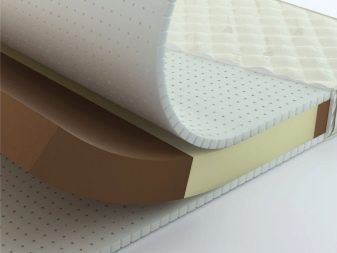
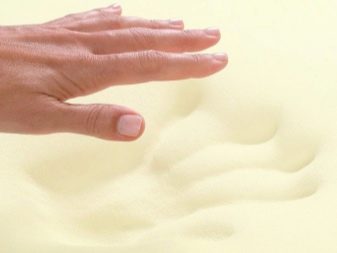
- bilateral with asymmetry for unbalanced partners - excellent designs for users with large differences in weight;
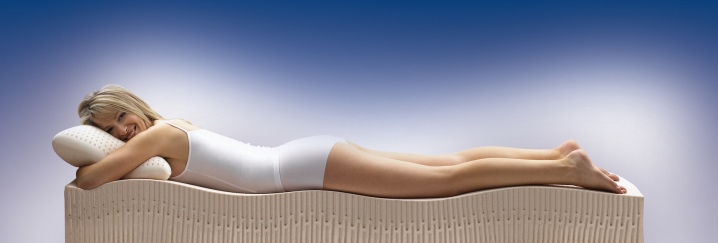
- bilateral with varying degrees of rigidity - ideal for those who like to vary the surface hardness;
- orthopedic - with an effect that contributes to the correct position of the body during sleep;
- traction - novelties with massage effect, featuring special air cushions.

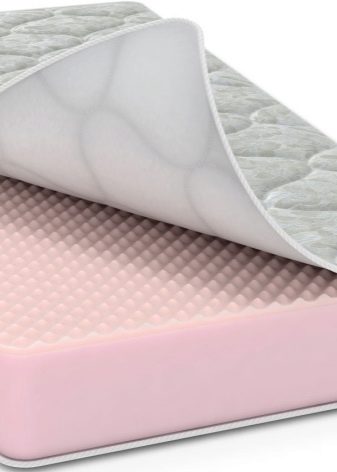
Dimensions (edit)
The parameters of foam mattresses depend on the size of the bed (they can be of a standard or non-standard shape), take into account the number of beds (one or two) and the different weight of the user. Usually the manufacturer indicates three characteristics of the product: length, width, height (for example, 100x200x10, 180x200x10 cm). Sometimes companies indicate the length in millimeters (1600x2000).
In terms of thickness, foam mats are thin (toppers 5, 7, 10 cm thick) and standard (12-15 cm). Composite mattresses with foam rubber and additional additives reach 18 cm in height. The average length and width of foam blocks is 80x185, 90x190, 125x195, 90x200, 130x200, 135x200, 140x200 cm. There are also non-standard models in the rulers (for example, for a crib: 118x59 cm).
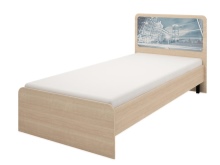
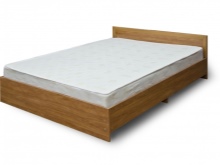
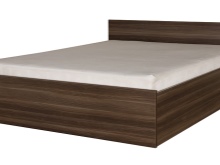
Density and rigidity
Foam mattresses are dense. It is she who determines the degree of hardness of the mattress:
- soft - a version with a lower density, designed for an average weight of about 90 kg;
- moderately hard (medium hard) - a model on which you can sit alone or together (total weight up to 110 kg);
- hard - a dense version of the filler that can withstand the weight of partners up to 140 kg.
In order not to be mistaken in the choice, it is worth taking note: you need to buy the mattress that pushes out a clenched fist. It is such a block that will not sag, will not form dents, crumble and create discomfort.
The higher the density, the better the foam mattress. Of course, the more difficult it is to bend and transport it if necessary, however, this nuance is more than compensated by the elasticity and support of the body (unnatural sagging is excluded).
Which one is better to choose?
Choosing a foam mattress is not difficult, but requires a careful approach. The first thing to remember is the choice in favor of HR-type furniture PPU: it is this material that will last longer without diminishing its qualities when used correctly.
To make it easier to navigate a huge selection, you should heed the advice of experts:
- before buying, you should look through the information about the models you like most, having studied their characteristics, size, height, permissible load, calculated service life (on the websites of manufacturers or official suppliers);
- if you have problems with the spine, back pain, osteochondrosis, impaired blood flow, numbness of the extremities, you need to consult an orthopedic doctor (it is important to choose the right rigidity, type of filler and block height);
- a quality certificate and a seller's guarantee are required (this testifies in favor of the characteristics of the unit and speaks of the manufacturer's reputation);
- from different types of block, it is worth giving preference to the composite one: this option will last longer, especially if it is supplemented with latex or coir;
- in choosing the degree of rigidity, the rule must be observed: the more weight, the harder the mat (with the exception of children and old age, excessive weight);

- a high-quality mattress is packed in a removable cover: a reliable company takes care of every little detail in the development;
- in order for the mattress to add comfort, you should pay attention to bilateral models with different degrees of rigidity of the sides or the option with thermoregulation:
- a benchmark for the price is one of the indicators (cheap options have a low density, so they will not be enough for a long time);
- for those who are used to basking in bed and prefer maximum comfort, you can purchase a model with an anatomical effect (exclusively for adults);
- if there is no money to buy an expensive mattress, but you need a hard mattress that can prevent spinal diseases, it is better to choose a hard mat with a double layer of coconut coir;
- the textile of the cover should be dense (ideally, you can choose a waterproof version of the upholstery).
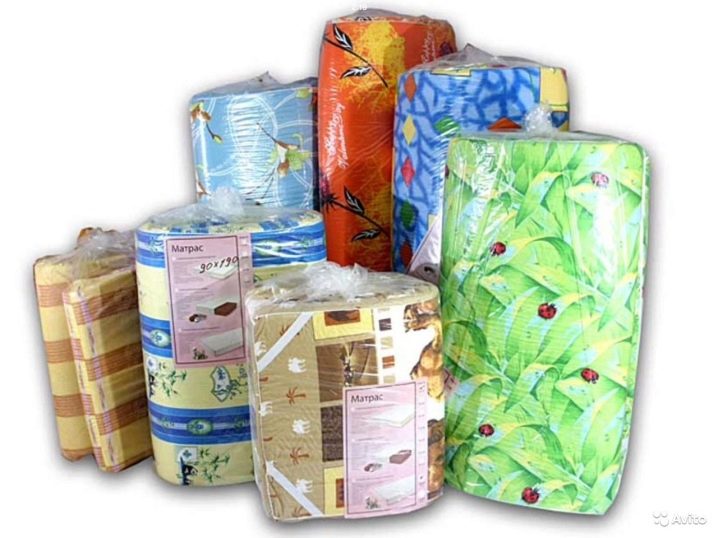
Is it suitable for children?
Despite the fact that manufacturers offer foam mattresses for children, such designs are unacceptable for children. Even if the block is supplemented with coir or latex, it will not replace the latex or coconut block, which has an excellent orthopedic effect. Beliefs in the usefulness of such models for children are erroneous.
From birth to adulthood, the skeleton of a child is continuously growing. Any wrong posture can cause irreparable harm to the development of posture. This is not the case when you can save on health.
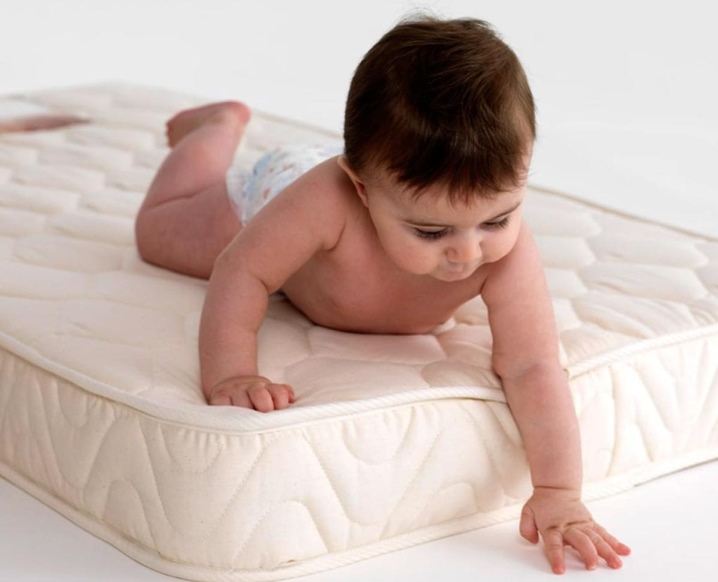
How to do it yourself?
Every home owner can make a foam block. Moreover, for this, the components themselves, patience and accuracy are enough. To please family members with a homemade foam mattress, you will need special glue, scissors, foam rubber, textile for the cover, zipper, sewing machine, threads, cord (for the mattress topper), synthetic winterizer.
Before starting work, the material must be selected correctly, otherwise the finished product will not last even several years. If you are planning a special design with an additional effect (thermoregulation, varying degrees of rigidity, winter-summer option), you should take care of buying a layer of felt (sheep's wool), coconut coir or latex, spandbond, flax (choice of material in accordance with the selected effect).
Having bought a foam rubber layer and additives of the same size, they are glued together, then the edges are trimmed and the cover is sewn. Ideally, you can use the mattress topper from the old block, rip it apart and cut out the details on it. If there is no such cover, measure each face of the block, give allowances for the seams, grind the parts, leaving a hole for the zipper in one of the side seams. Having sewn in a zipper, you can pack the foam rubber.
A little advice: to make the cover last longer, it is worth complementing it with a padding polyester (by means of a stitch). This will make it thicker, softer and warmer. We must not forget about the color: it is better to choose a bright color with a print (a practical option that will look like new for a long time).
Watch a video on the topic.
How to care?
Taking care of the foam block is easy. In order for the product to last a long time, it is worth doing a few simple guidelines:
- the mattress needs to be turned over to the other side about 1 time per month;
- to prevent tracking, you need to change the position of the legs and shoulders (no more than 1 time per month);
- airing and drying of the mattress is carried out at least once every two months (on the balcony away from sunlight);
- so that dust does not accumulate in the unit, it must be removed with a vacuum cleaner;
- if the cover is dirty, wash it.
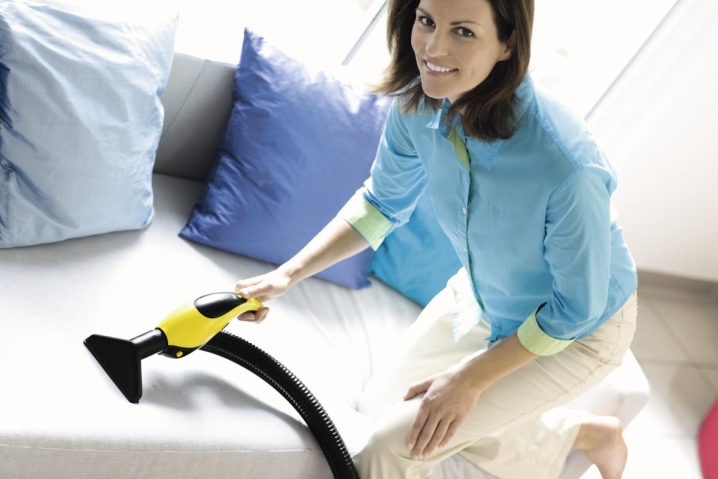
In addition to the rules of care, it is important not to forget about careful operation: the permissible load on the mattress must not be exceeded. If the block was bought as a futon (for daily transformation when creating a bed area), you should not tie it up, putting it in a laundry drawer. The less often the mattress bends, the better.
Reviews
Foam mattresses are considered a good buy.Satisfied users note that such mats are comfortable and provide comfortable placement on the bed. The comments say that foam mattresses are light, elastic, take the desired shape, and are well suited for people with a lot of weight.
The most practical, according to buyers, are composite-type polyurethane foam models. Sleeping on them is comfortable, warm, cozy, - users say. During the night, the muscles completely relax, the body rests, the mood for the new day is always positive - the buyers sum up.
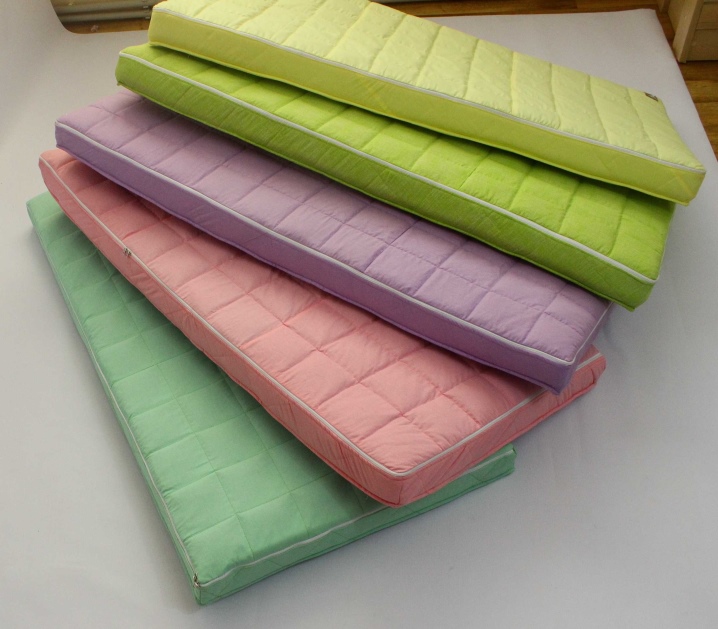













Do I need to put foam rubber on top of a spring mattress?
The comment was sent successfully.